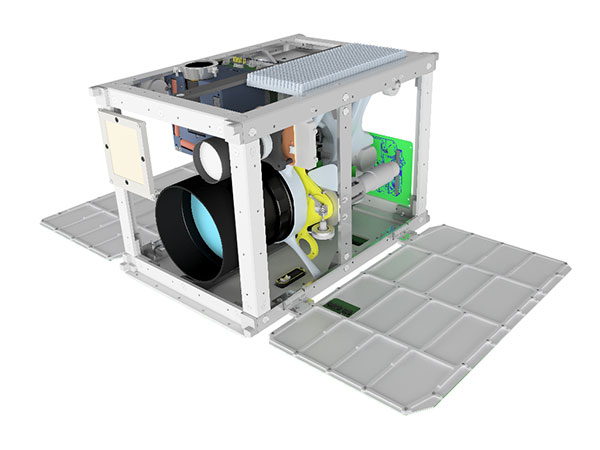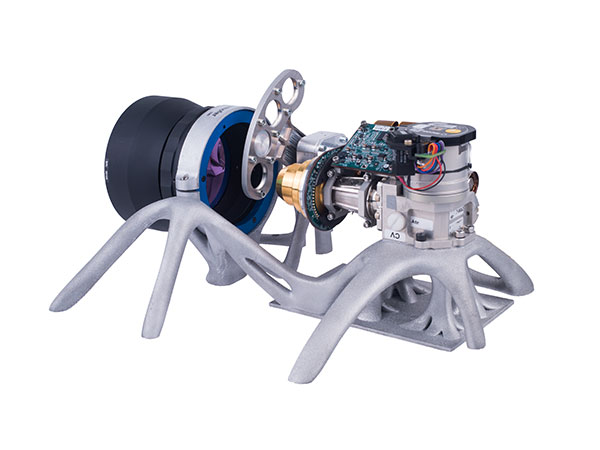

The space technology industry is currently undergoing major changes, which are termed “New Space” by its protagonists. These changes, propelled by considerable private investments, include the implementation of large constellations of small serially produced satellites. With the nanosatellite ERNST, we at Fraunhofer EMI are developing our own modular platform in order to demonstrate the performance potential of this satellite category and to also benefit from the dynamics of the small satellite market. In this context, we do not consider the development of nanosatellites as competition for the established high performance satellites but as a complement. The added value of the latter can be expanded and enhanced by cost effective and quick-response nanosatellite missions.
In ERNST, which is only 236 x 236 x 340 cubic millimeters in size and weighs 20 kilograms, we accommodate a cryogen-cooled infrared detector for the observation of rocket launches, a camera for earth observation in the visible range, and a radiation detector developed at Fraunhofer INT. Currently, we are integrating and testing the ERNST qualification model and are developing software, 3D-printed structures and a de-orbit drag sail. The launch is scheduled for 2022.